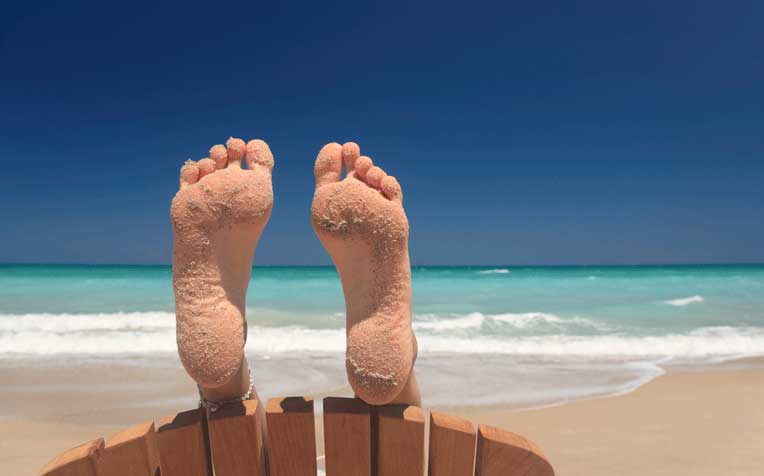
High arched feet may occur spontaneously with no discernible cause.
It is estimated that 1 in 5 Asians has flat feet. But did you know that nearly as many people have the opposite foot type, or high arched feet?
This lesser known condition is referred to as cavoid foot or pes cavus (the Latin term for “hollow foot”).
Simply put, pes cavus is a condition in which the foot has a very high arch. As a result, a larger amount of weight is placed on the ball and heel of the foot when walking, standing or running. This can significantly increase the workload on the muscles that control the foot, which may lead to an overuse injury.
How do I know I have high arched feet?
A high arch may be difficult to diagnose without the help of a podiatrist. However, a simple footprint test may help you decide whether to seek a professional foot posture evaluation.
The wet footprint test
Get your feet wet and then stand on a paper towel or paper bag. Compare the resulting arch shape with the illustration below. Please note that this test is not perfectly accurate and that a proper foot posture evaluation includes many other components.

What can cause high arched feet?
In over 80 per cent of cases, the high arched foot has a spontaneous origin with no discernible cause.
In the remaining 20 per cent of cases, the high arch foot is typically linked to one of the three following scenarios:
- A neuromuscular condition – Certain conditions may affect nerves and muscles and cause an increase in arch height. The most likely of these conditions is Charcot-Marie-Tooth disease, an inherited disorder characterised by progressive loss of muscle tissue and touch sensation.
- Family history of certain deformities, such as club foot.
- Trauma – Severe foot trauma, such as a fracture or burns, could cause a high arched foot.
If I have high arched feet, does it mean that I’m going to get pain?
Having pes cavus does not necessarily increase the incidence of injury and does not usually cause problems.
However, some people will experience a variety of symptoms, such as pain and instability. These symptoms can develop at any age and typically appear in both feet.
Do I need treatment for pes cavus?
Treatment is only required if the high arched foot is associated with pain in the foot or lower limb. In the absence of pain, treatment is not indicated simply as a result of having high arched feet. However, in severe cases, treatment may be warranted in order to prevent any possible future injuries.
What treatments are available?
The goal of treatment would be to allow the patient to walk or run without any symptoms. Your podiatrist or doctor will seek to identify any underlying cause and signs that the disorder is progressive.
Non-surgical treatments may include:
- Orthotic devices fitting into footwear, to help reduce overloading.
- Shoe modifications, in the form of high-topped shoes offering more foot stability.
- Physical therapy to stretch tight muscles and strengthen weak muscles.
Surgery may be considered if the above measures fail to control or reduce symptoms. Surgical intervention is only justified when the deformity is fast-progressing or so pronounced that symptoms are unresponsive to conservative treatments.
Ref: R14














 Get it on Google Play
Get it on Google Play